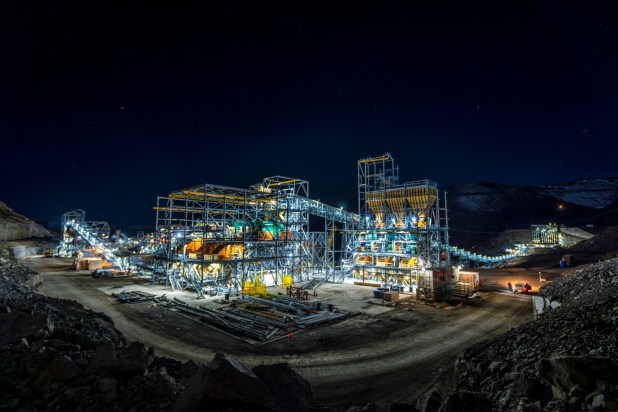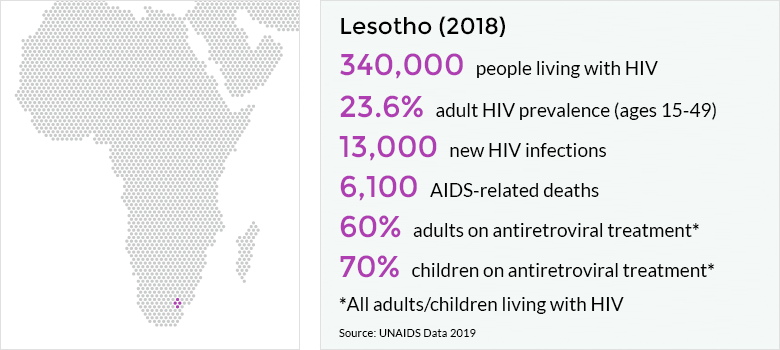
Liqhobong Diamond Mine has reaffirmed its resolve to end the recently imposed cessation of operations due to power shortage, which experts say exposed serious limitations.
The mine announced this week it has had suspended mining activities indefinitely after the ‘Muela Hydropower Station – its major source of electricity – put a moratorium on power generation pending ongoing maintenance work which will end at the end of November.
This followed a shutdown of a dried up Katse Dam which the Lesotho Highlands Development Authority disclosed last week, would resume transferring water to South Africa after two months, which coincides with the time the Lesotho Meteorological Services predicted would see the first rainfalls of the season.
The Firestone Diamonds-owned mine says it is currently not producing any diamonds as it was experiencing unexpected voltage fluctuations that caused the drives of the plant equipment to trip, thereby severely disrupting operations.
Speaking at a news conference in Maseru on Monday, Liqhobong’s country manager ‘Mamosa Matela indicated that the mine had downsized its workforce to 80, having temporarily laid off 563 workers.
“We started experiencing problems on October 1 2019 when ‘Muela stopped producing electricity due to the maintenance work that the Lesotho Electricity Company (LEC) told them (in September) would be embarked on.
“When Muela started its maintenance work we experienced a power cut, and we started received electricity supply from LEC, which proved to be insufficient to even start our machines at the plant.
“We then learned from LEC that South Africa’s Eskom’s line 1 which transfers electricity to Liqhobong was malfunctioning and could not transfer enough electricity to the mine. This interrupted the production that the mine has to do on a daily basis,” she said.
Matela later explained that unlike other mines, Liqhobong does not have big generators capable of picking up automatically in the event of a disruption to power supply.
“Unlike Kao which is also affected by the closing down of ‘Muela Hydropower Station, Liqhobong does not have big generators which can take over when we experience power cuts.”
Asked why such a big mine does not have generators, Matela said: “When the mine started operating, the company’s budget was not big enough to cover the installation of generators at the plant,” she said.
Matela added that since the notification on the said date that ‘Muela would stop producing electricity, they had asked LEC to be on hand to continue supplying them with electricity and they never thought they would experience any problems; they only realized that the electricity was not enough when their plant could not start.
“On 1 October when we realized that we are facing problems we had a meeting with LEC, which is now working on the problem with Eskom,” she said.
Matela said they are currently looking to procure generators so they can resume work while the problem of electricity is being resolved.
On the issue of the Liqhobong workers, she indicated that all employees will continue to receive their salaries, adding that they have been sent home merely as a cost cutting exercise.
Liqhobong’s head of finance department, ‘Nete ‘Nete, revealed that the mine makes M2.5million a day. This means that the mine has already lost M20million in eight days.
Meanwhile, the principal secretary of the ministry of energy and meteorology, Khomoatsana Tau, warned Liqhobong not to place the blame on LEC for their problems because it is their machines are not able to accept Eskom electricity.
He added that the ministry is currently working hard to increase electricity production in the country so as to get rid of the challenges of having to rely on Eskom for power supply.
“We have explored alternative sources of producing electricity, and solar energy is one of them; this will soon in operation at Mafeteng Ha Ramarothole where 90 megawatts (MW) of electricity will be generated daily.
“Apart from that, we are also working on introducing wind energy at Letšeng la Terai and Semonkong where 35 and 25 MW of electricity will be generated, respectively, everyday,” Tau said.
He stated that once these projects are completed, Lesotho will no longer have to rely on electricity imported from South Africa as there will be enough electricity to meet the country’s electricity needs of approximately 150 MW daily.
In another development, LEC spokesperson Tšepang Ledia yesterday told theReporter that, Liqhobong, LEC, Eskom and Kao Mine (which is also affected by the energy crisis) had a meeting on Wednesday this week which all stakeholders discussing the issue and coming up with what they believe is a sustainable solution.
Ledia said the observation of the meeting was that there is no problem with LEC and Eskom electricity, but the problem lies with the two mines, whose equipment with the two mines is that their machines are very sensitive and easily detect the changes in the flow of electricity.
“The resolution was that the two mines should try and recalibrate their machines so they can easily accept the electricity that the rest of Lesotho uses. Calibrating their machines will make them flexible and receptive to different voltages of electricity.
“Kao heeded the request to calibrate their machines and even tested them to make sure they are operational. Liqhobong, on the other hand, did not seem too keen to calibrate theirs, as they said they will only have a meeting today (yesterday) to consider our proposal and decide on the way forward.
“The two mines are very close to ‘Muela. This means they get electricity very efficiently because of their proximity to the source; as for electricity imported from South Africa, they may not get it as efficiently. Other mines like Letṧeng have machines that are very flexible and easily adapt to any changes in electricity voltage.
He also dismissed the apparent lack of preparedness on the part of the mines, indicating that maintenance of ‘Muela is not a new thing which the mines know nothing about. He said it happens every seven years and when it happens, LEC always has a contingency measure in place to ensure minimum impact on power supply.








